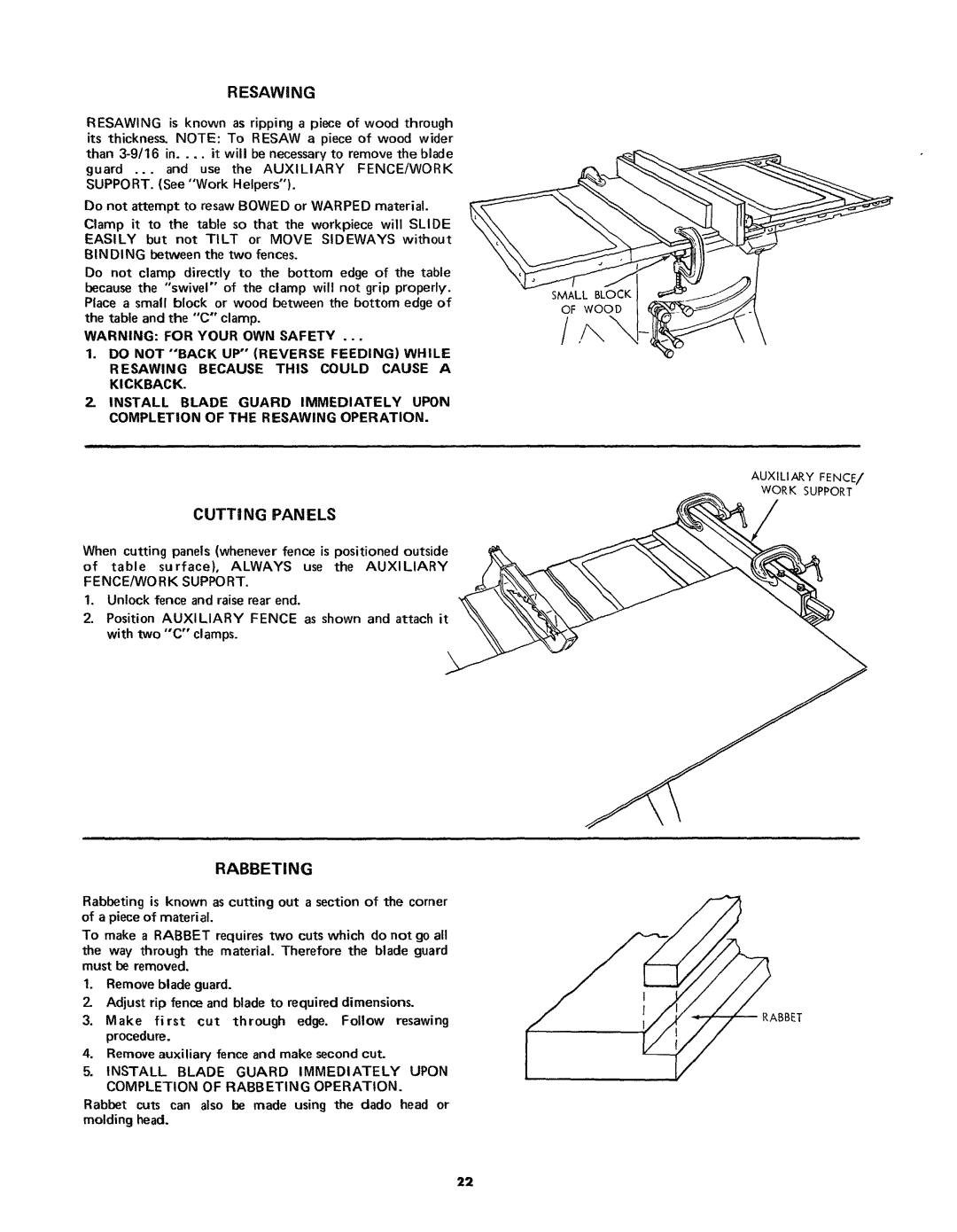
RESAWING
RESAWING | is known | as ripping | a piece | of wood | through | |||
its thickness. NOTE: To | RESAW | a | piece of wood wider | |||||
than | in.... | it | will | be necessary | to | remove | the blade | |
guard ... | and | use | the | AUXILIARY |
| FENCE/WORK | ||
SUPPORT. | (See | "Work | Helpers"). |
|
|
|
| |
Do not attempt to resaw BOWED or WARPED material.
Clamp it to the table so that the workpiece will SLIDE EASILY but not TILT or MOVE SIDEWAYS without BINDING between the two fences.
Do not clamp directly to the bottom edge of the table because the "swivel" of the clamp will not grip properly.
Place a small block or wood between the bottom edge of the table and the "C" clamp.
WARNING: FOR YOUR OWN SAFETY ...
1.DO NOT "BACK UP" (REVERSE FEEDING) WHILE
RESAWlNG BECAUSE THIS COULD CAUSE A KICKBACK.
Z INSTALL BLADE GUARD IMMEDIATELY UPON COMPLETION OF THE RESAWlNG OPERATION.
CUTTI NG PAN ELS
When cutting panels (whenever fence is positioned outside
of table surface), ALWAYS use the AUXILIARY FENCE/WORK SUPPORT.
1.Unlock fence and raise rear end.
2.Position AUXILIARY FENCE as shown and attach it with two "C" clamps.
RABBETING
Rabbeting is known as cutting out a section of the corner of a piece of material.
To make a RABBET requires two cuts which do not go all the way through the material. Therefore the blade guard must be removed.
1.Remove blade guard.
ZAdjust rip fence and blade to required dimensions.
3. Make first cut through edge. Follow resawing procedure.
4.Remove auxiliary fence and make second cut.
5.INSTALL BLADE GUARD IMMEDIATELY UPON COMPLETION OF RABBETING OPERATION.
Rabbet cuts can also be made using the dado head or molding head.
AUXILI AP_YFENCE/ WORK SUPPORT
RABBET
22
